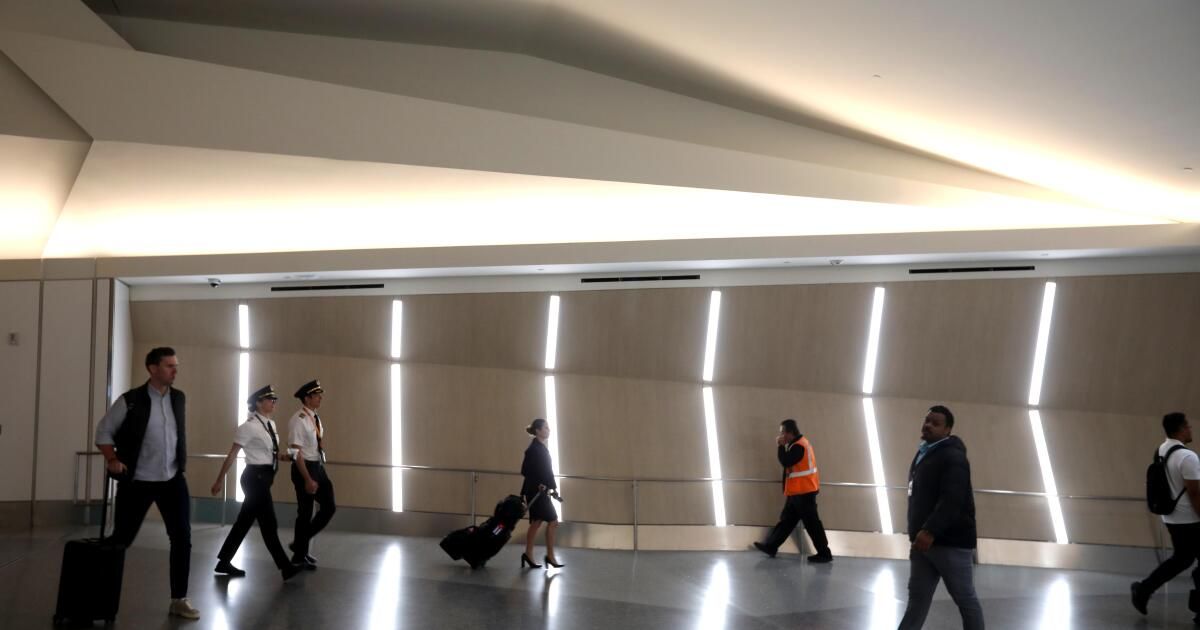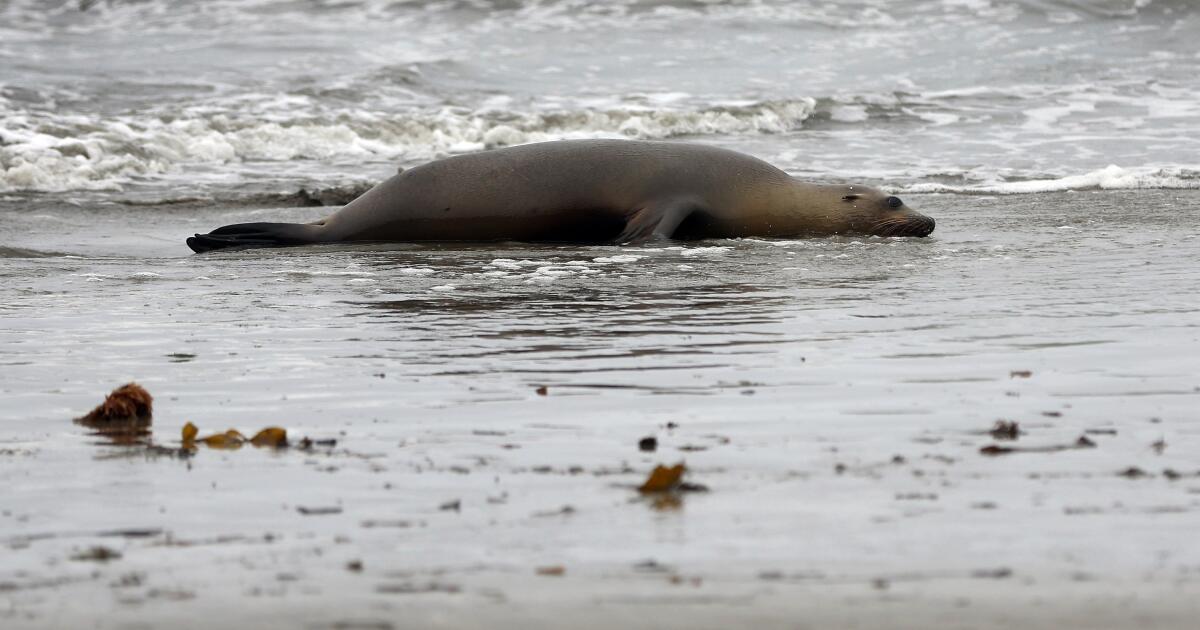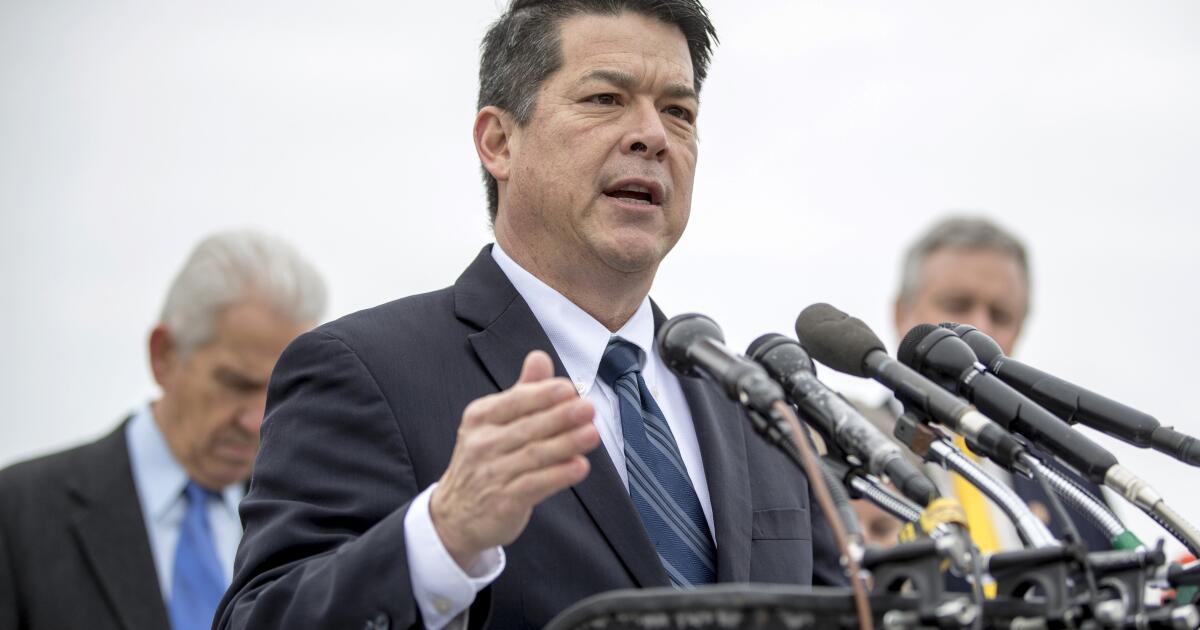COVID numbers in California are rising thanks in part to new subvariants, suggesting an earlier-than-normal start to the summer season.
The percentage of COVID tests coming back positive in the state increased to 5.3% for the week ending June 3, up from 2.2% the previous month.
The numbers remain relatively low (last summer's peak positive test rate was 13.1%), but the increases are drawing the attention of doctors and health officials as the summer travel season begins.
“The numbers are definitely going up,” said Dr. Elizabeth Hudson, regional chief of infectious diseases at Kaiser Permanente Southern California. Among Kaiser's 4.8 million members in Southern California, the COVID surge is primarily among non-hospitalized people.
The Los Angeles County Department of Public Health reported an average of 106 COVID cases for the week ending June 2. That's up from 67 cases per day during the week ending May 12.
“We have seen this happen for the last four and a half years. We know we tend to see another wave around this time,” Hudson said. This one “started a little earlier, so it may peak a little earlier, and often we don't see those hospitalized cases until a little later.”
COVID levels are also increasing in wastewater. In Los Angeles County, wastewater levels were at 16% of the winter peak for the week ending May 25, up from 8% for the week ending May 4. In Santa Clara County, the Bay Area's most populous county, COVID levels in wastewater are considered high from San Jose to Palo Alto. There is also a notable increase in wastewater samples from San Francisco.
Across California, COVID in wastewater hit high during the week ending June 1, the first time since February.
The new subvariants are increasingly leaving their mark throughout the country. During the two-week period ending Friday, 55% of estimated COVID samples in the US were of the FLiRT variants, up from 28.6% the previous month. Another upstart, LB.1, is estimated to account for 14.9% of specimens nationwide, up from 6.7% last month.
The parent of the FLiRT and LB.1 subvariants, the winter-dominant JN.1 strain, now represents approximately 3.1% of strains nationwide. LB.1 is similar to the FLiRT subvariants, officially known as KP.1.1, KP. 2 and KP.3, and neither are much different from JN.1, said Dr. Peter Chin-Hong, an infectious disease specialist at UC San Francisco.
“They are different enough that they are increasing and probably exploiting vulnerabilities, and they are highly transmissible, but not so different” from JN.1 that they pose an increased risk of severe disease, Chin-Hong said. .
Still, doctors remain concerned about the risk of serious illness and death among older and immunocompromised people, especially those who have not received an updated vaccine since September. More than 44,000 COVID deaths have been reported since October; By contrast, the US Centers for Disease Control and Prevention's weekly flu surveillance report estimates 24,000 flu deaths during the same period.
A report published in March by the CDC, which looked at adults with immunocompromising conditions, found that only 18% had received an updated COVID-19 vaccine since September.
The CDC urges everyone 6 months and older to get vaccinated with the updated vaccine, and for people 65 and older, two shots, as long as four months have passed since the first one.
But with only 36% of California seniors having received any COVID vaccine since September, doctors say it's important for the remaining population 65 and older to get a vaccine now.
Several racial and ethnic groups have begun to see even lower vaccination rates among older people. In California, only 31.6% of Black seniors, 29.9% of Asian American seniors, and 22.8% of Latino seniors have received an updated COVID-19 vaccine.
Senior vaccination rates also vary by region: They are below the state average in much of Southern California and highest in the San Francisco Bay Area. Los Angeles County reports 30.8% of its seniors with up-to-date vaccinations; in San Diego County, 38.6%; Orange County, 34.2%; Riverside County, 28.1%; San Bernardino County, 26.3%; Ventura County, 37.4%; and Santa Barbara County, 40.4%.
The percentage is about 46% in Santa Clara County, more than 50% in San Francisco and almost 60% in Marin County.
“Many people have not even received a single injection. How about we make sure that happens? Chin-Hong said about the elderly. “Everyone over 65 should probably get the vaccine before the new one comes out in the fall.”
If a senior received the COVID vaccine now, there would still be enough time to receive the next formulation this fall around Halloween, which is a good time to get vaccinated to protect against the winter surge in COVID infections, Chin-said. Hong.
“For those who are more vulnerable, I would certainly recommend getting that first or second shot,” Hudson said.
Chin-Hong said the patients he has cared for hospitalized with COVID have not received an updated vaccine in the last year.
There remains good data demonstrating the vaccine's effectiveness, even though the latest version was designed against the XBB.1.5 subvariant, which was supplanted by JN.1 in the winter.
In a report presented last week to a U.S. Food and Drug Administration advisory committee, CDC epidemiologist Ruth Link-Gelles said the September vaccine provided greater protection against symptomatic disease, as well such as hospitalizations and emergency room and urgent care visits associated with COVID, compared to those who do not get an updated photo.
But scientists have also observed a weakening of immunity over time, which is not surprising, given that the same phenomenon has been observed in previous COVID vaccines. As before, the longer-lasting protection offered by the new vaccine protected against critical illnesses, Link-Gelles said.
The latest vaccine provides protection against JN.1, although perhaps less than if someone is exposed to an XBB subvariant, Link-Gelles said.
The FDA's Vaccines and Related Biological Products Advisory Committee voted unanimously last week to recommend that this fall's updated COVID vaccine formulation be designed against JN.1 rather than FLiRT or another descendant of JN.1.
Betting on one of the later offspring like FLiRT could lead to a bad matchup if another offspring overtakes it. But sticking with a vaccine that protects against the original strain may ensure a better match this winter.
“The COVID vaccine still provides very good protection against serious illness and against people ending up in the hospital,” Hudson said. Still, “COVID is very, very new to us as a species; Still, and just by the nature of what coronaviruses do, they tend to mutate quickly. Therefore, it would not be unexpected to see that, over time, the protection that would be obtained through the COVID vaccine would tend to diminish somewhat.
One promising development that is not yet available is the one-shot flu and COVID vaccine. That likely won't happen until fall 2025, but its introduction could be a game-changer and improve COVID vaccination rates. An estimated 22.5% of adults nationwide reported having been vaccinated against COVID, according to survey data reported to the CDC, compared to an estimated 48.5% for the flu.
“If you can get two things with one needle, I'm all for it,” Chin-Hong said.
The Moderna version of the combined flu and COVID vaccine was actually more effective than receiving the COVID and flu vaccines separately, Hudson said. Other manufacturers are also expected to develop combination flu and COVID vaccines.
The Los Angeles County Department of Public Health reported a small increase in new COVID hospital admissions: an average of 19.6 per day, up from 16.9 per day about three weeks ago. Nine percent of hospitalized patients are in intensive care, but “deaths remain relatively low and stable,” with an average of one death per day, the agency said.
Previously, the mid-year increase in COVID cases and hospitalizations in Los Angeles County began in early July, in 2021 and 2023, but in early May in 2022.
“With travel and gatherings increasing over the summer, protection against COVID-19 infection remains important as a new group of variants has begun to circulate across the country,” the Department of Public Health said. “Summer plans can be easily disrupted by the COVID-19 disease and increased transmission continues to pose a greater risk to older people.”
In addition to catching up on vaccinations, officials suggest common-sense measures to reduce the risk of spreading illness and getting sick: Have sick people stay home and wash their hands frequently, especially before eating and after eating. sneeze or cough. COVID testing is important to help limit the spread of the disease and can also help people know when they should seek anti-COVID medications like Paxlovid, which can reduce the risk of serious illness or death among those most at risk. .
People with COVID who are contagious should stay home and if they need to be around other people, they should wear a mask. Those who want to reduce the risk of becoming infected can wear a mask in indoor public places and in crowded areas.












